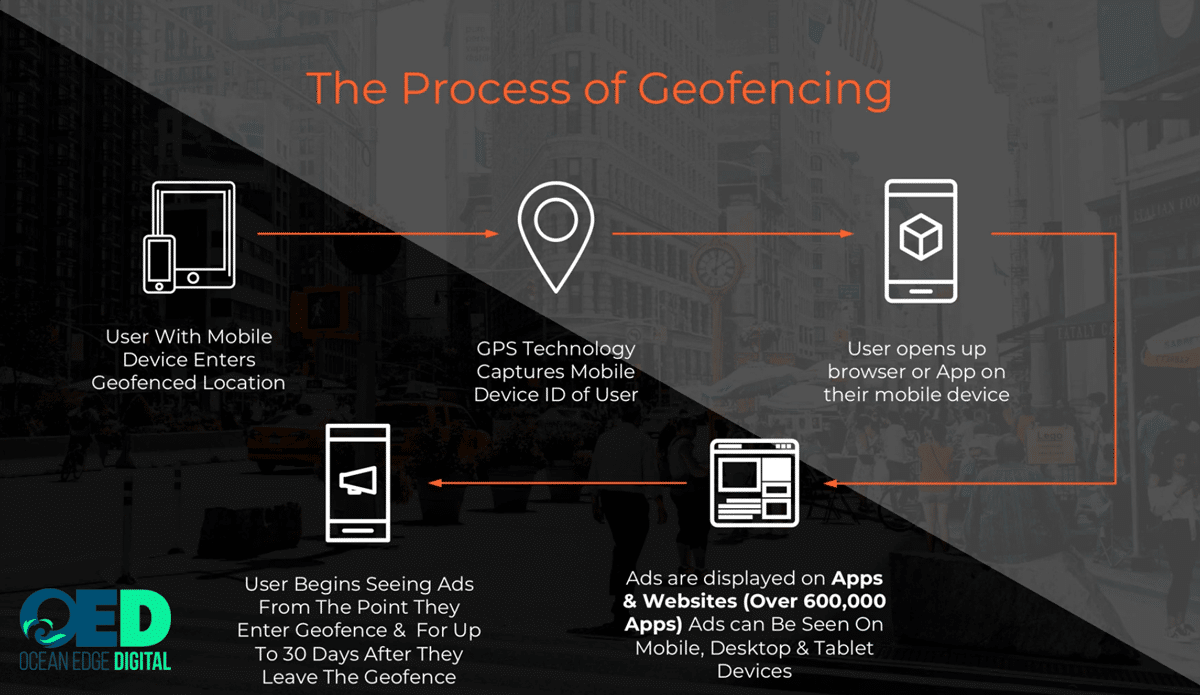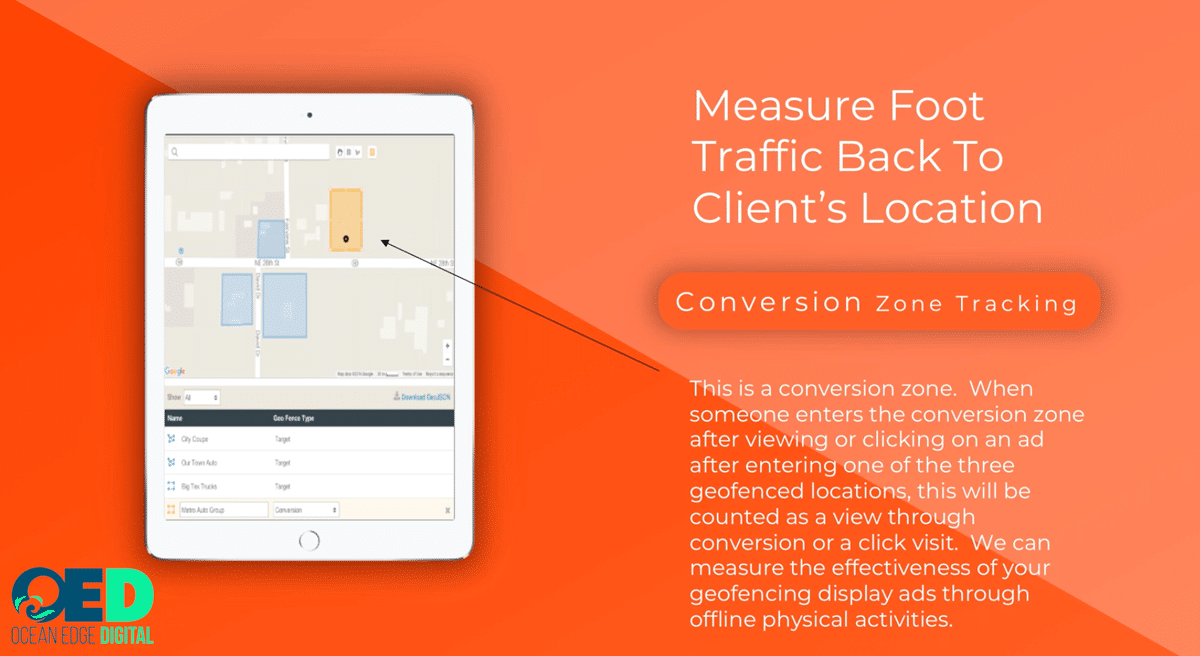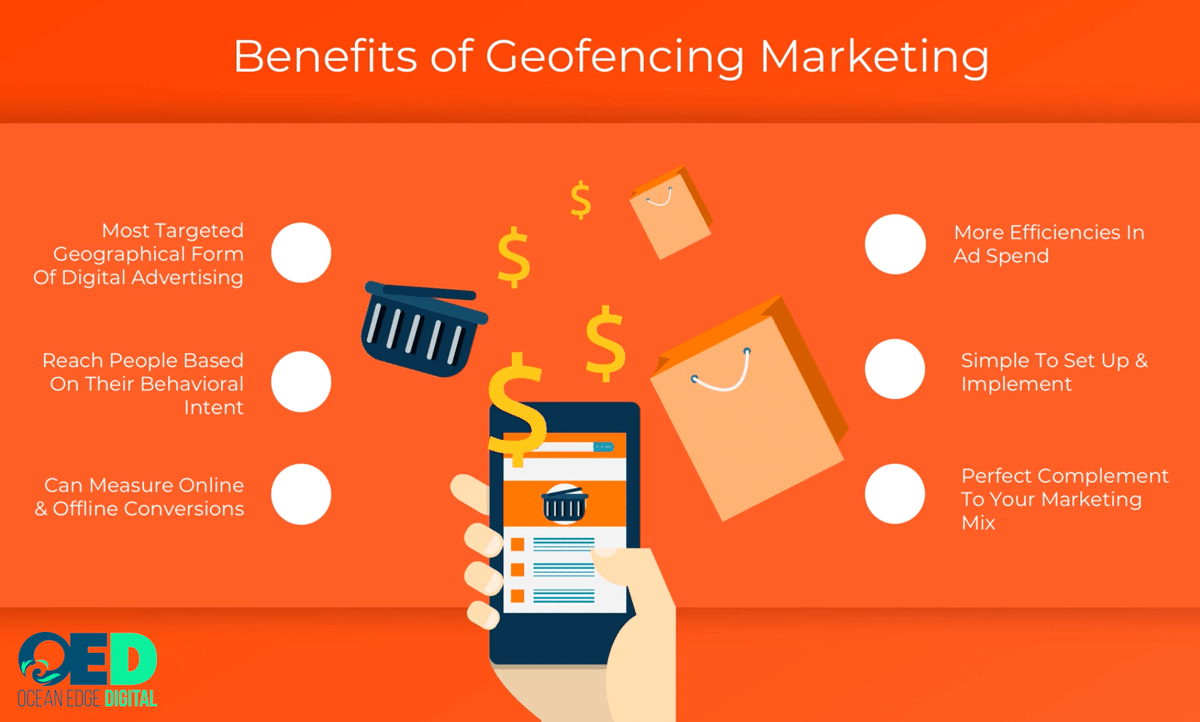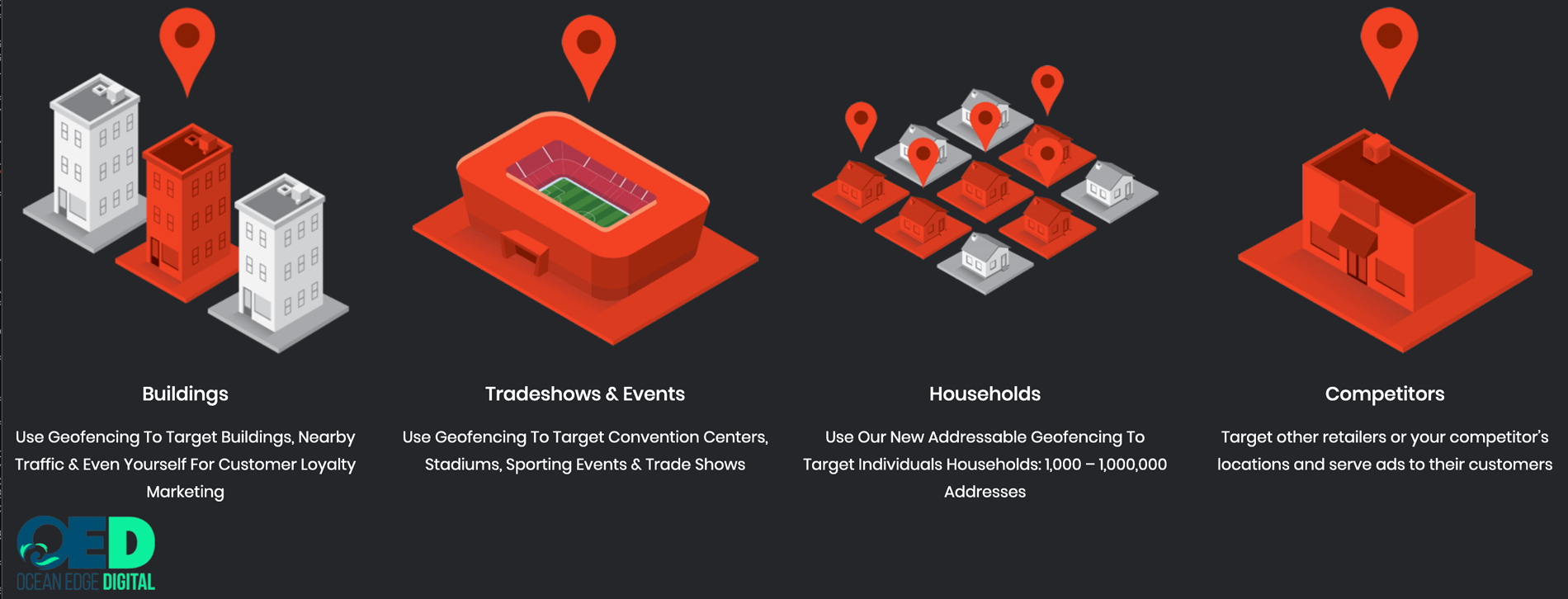
Geofencing Marketing

What is Geofencing Marketing?
In today’s highly competitive market, reaching potential customers with precision and relevance is more important than ever. As technology advances, so too do the tools available to businesses to connect with their audience. One such tool that has gained significant traction in recent years is geofencing. Particularly geofencing for local small businesses. Geofencing marketing presents a unique opportunity to engage with customers in a timely and targeted manner, leading to increased traffic and higher conversion rates. But what exactly is geofencing, and how can it benefit your small business?
Understanding Geofencing Marketing
Geofencing marketing for local small business is a location-based marketing technology that allows businesses to define a virtual boundary around a specific geographic area. When a mobile device enters or exits this predefined area, it triggers a predetermined action, such as sending a banner ad or video to a mobile device. This technology leverages GPS, Wi-Fi, RFID, or cellular data to create these virtual boundaries and to monitor when a device crosses them.

For example, your business could set up a geofence around your physical location, around competitor locations, or even around places where potential customers are likely to be, such as shopping malls or local events. When someone with a mobile device enters the geofenced area, they could receive a promotion, a discount offer, or information about the services provided by your business. This type of highly targeted marketing ensures that your message is reaching people who are in close proximity to your business and are potentially in need of your services.

How Does Geofencing Marketing Work?
The technology behind geofencing marketing is relatively straightforward but highly effective. Here’s a step-by-step breakdown of how it works:
1. Setting the Boundary – The first step is to define the geographic area you want to target. This can be as small as a single building or as large as an entire city. The area is usually defined using GPS coordinates or lot lines.
2. Creating the Trigger – Once the boundary is set, the next step is to determine what action will be triggered when a device crosses the geofence. This could be sending a notification, displaying an ad, or even sending a text message.
3. Monitoring Device Activity – The geofencing software then monitors the location of mobile devices in real-time. When a device enters or exits the geofenced area, it triggers the predetermined action.
4. Engaging the Customer – Finally, the triggered action reaches the potential customer, providing them with relevant information or an incentive to visit your small business, “Would you like a second opinion?”
The Benefits of Geofencing Marketing
Now that we understand what geofencing is and how it works, let’s explore why it’s particularly beneficial for your business.
1. Targeted Marketing
One of the most significant advantages of geofencing marketing is its ability to target customers with precision. Traditional forms of advertising, such as print ads or billboards, cast a wide net, hoping to capture the attention of anyone who might be interested. Geofencing marketing, on the other hand, allows you to target specific groups of people based on their location and behavior.
For instance, if your business specializes in HVAC services, you could set up geofences around condominium buildings or complexes. When a person’s mobile device enters this area, they could receive a notification about your HVAC services. This level of targeting ensures that your message is reaching individuals who are more likely to need your services, increasing the chances of conversion.

2. Cost-Effective Advertising
Geofencing marketing is a cost-effective way to advertise because it allows you to reach a specific audience rather than spending money on broad, untargeted campaigns. You only pay for ads or notifications that are delivered to users who enter your geofenced area, ensuring that your marketing budget is spent on reaching potential customers who are most likely to convert.
3. Increased Customer Engagement
Geofencing marketing for small business allows for real-time engagement with potential customers, which can significantly increase the likelihood of them visiting or calling your business. By sending timely and relevant messages, you can catch people’s attention at the exact moment when they might need your services.
For example, your area has been locked in a heat wave and air conditioners are breaking down more frequently, many times due to lack of maintenance. If the condos you have geofenced receive a notification from your business letting them know you offer emergency service and cost efficient maintenance agreements, you’re likely to get some phone calls.
4. Competitive Advantage
Staying with the HVAC example, competition can be fierce. Geofencing marketing provides a way to gain an edge over your competitors by reaching potential customers first. For instance, you could set up geofences around condos you know are serviced by a competitor so that they receive a notification about your services and why they might consider switching to your service. This could be a game-changer, especially if you offer something your competitors don’t, such as Emergency service and affordable maintenance agreements.
5. Data Collection and Analysis
Another significant benefit of geofencing marketing is the ability to collect valuable data about customer behavior. By tracking who enters your geofenced areas and how they respond to your marketing messages, you can gain insights into your target audience’s preferences and habits. This data can then be used to refine your marketing strategy, making it even more effective.
How to Implement Geofencing Marketing
If you’re convinced that geofencing marketing could be beneficial for your business, the next step is to implement it into your marketing strategy.
Here’s how to get started: schedule a short phone call with Bill by clicking the button below. On your call, Bill will answer any questions you have about pricing, ad creatives, and geofencing marketing in general. No sales pitch, no pressure.

